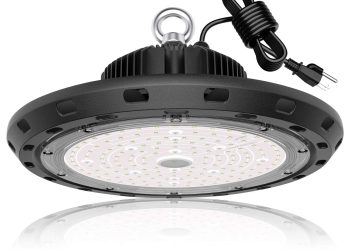Exploring the domains of frequency and signals reveals the intricate world influencing our modern technology. From smartphones to satellites, these forces govern our digital connectivity and experience. We will unveil mitigation techniques, examine practical applications, and the importance of understanding their distinctions in our rapidly evolving digital landscape. Come join us on a captivating journey as we explore the difference between phase noise vs jitter!
Understanding Frequency and Signals
Understanding the importance of frequency and signals in communication systems. Here are some additional points to further enhance the understanding of these fundamental concepts:
Phase Noise
Short-term fluctuations in a signal’s phase are referred to as phase noise. Simply put, it signifies the instability or jitter in the signal’s timing. Electronic components, temperature variations, and power supply noise are among the factors that can cause phase noise.
Within communication systems, phase noise has the potential to impact the accuracy of signal synchronization, potentially resulting in errors during data transmission. Engineers employ methodologies such as phase-locked loops (PLLs) to minimize phase noise and establish stable signal timing.
Jitter
Jitter is the deviation from the true periodicity of a presumably periodic signal. It is the irregularities in the signal’s pulse or timing. Jitter can be caused by external factors such as electromagnetic interference, temperature fluctuations, or variations in power supply. It can also be introduced internally within electronic components.
In digital communication systems, jitter can lead to timing errors and impact the integrity of data transmission. To mitigate jitter, designers use techniques like clock recovery circuits and buffer systems.
Relationship Between Phase Noise vs Jitter
The relationship between phase noise and jitter is significant, as phase noise actively contributes to jitter, and an excess of jitter can lead to increased phase noise. Systems that require precise timing and signal synchronization, such as those in high-speed data communication or audio/video processing, critically consider both factors.
A comprehensive grasp of frequency, signals, phase noise, and jitter is important for crafting dependable and high-performance communication systems. Engineers utilize advanced signal processing techniques and technologies to effectively minimize the impact of these phenomena, guaranteeing the resilience and efficiency of contemporary communication systems.
Measurement Methods for Phase Noise and Jitter
The various methods engineers use to accurately measure phase noise and jitter. The spectrum analyzer method and time interval analyzer (TIA) approach are indeed fundamental techniques, offering valuable insights into the frequency components and timing variations of signals.
The mention of specialized instruments designed for phase noise and jitter measurements highlights the importance of having dedicated tools with enhanced sensitivity and resolution. This ensures that engineers can achieve the precision required for in-depth analysis, especially in applications where fine-tuned measurements are important.
Highlighting the suitability of different measurement techniques based on application requirements, such as the use of advanced methods for high-frequency applications, adds a layer of practical consideration for engineers.
Emphasizing the significance of proper calibration and validation procedures aligns with best practices in measurement and testing, ensuring the reliability and accuracy of the obtained results.
Overall, your explanation not only covers the methodologies but also the understanding of measurement techniques for engineers to effectively analyze and address phase noise and jitter in electronic devices. This knowledge is essential for optimizing system performance and reliability.
Impact on Electronic Devices
The significant impact of phase noise and jitter on electronic devices stresses the importance of precise timing and signal quality in various technologies. High-speed communication systems and ADCs/DACs, among other applications, highlight the practical difficulties posed by these phenomena.
In wireless communication, synchronization issues arising from phase noise and jitter lead to packet collisions, decreased network efficiency, and increased latency, all important factors for technologies like Wi-Fi and cellular networks.
Satellite communication systems face similar challenges in maintaining accurate timing, important for functions such as satellite television broadcasting and global navigation systems. Precision timing is also essential in medical imaging devices, automotive systems, and aerospace applications for reliable data acquisition.
The effects of phase noise and jitter can potentially compromise safety features and navigation precision in these fields. Your emphasis on understanding and mitigating these impacts aligns with industry efforts to improve electronic device reliability and performance through advanced engineering techniques during the design process.
Techniques for Reducing Phase Noise and Jitter
Phase noise and jitter must be reduced in electronic systems to remain stable and accurate. Several techniques are employed for this purpose:
● Low-Noise Components
Careful selection of components with low inherent noise, especially in important areas like oscillators and amplifiers. This includes low-phase noise oscillators and low-jitter clock sources.
● Grounding and Shielding
Proper grounding techniques, like star grounding or dedicated ground planes, can minimize ground loops and reduce noise. Shielding sensitive components or circuits using conductive enclosures helps prevent external electromagnetic interference.
● Clock Synchronization
Synchronized clocks, achieved through precise clock distribution and synchronization networks, are essential for minimizing timing errors and maintaining coherence between different parts of the system.
● Advanced Filtering
To mitigate phase noise and jitter, engineers can use filters like low-pass or band-pass filters. Ensuring a careful design of these filters is important to preserve signal integrity.
● Power Supply Optimization
Stable and clean power supplies are essential. Voltage regulators and filtering components help maintain a constant and noise-free power supply, reducing fluctuations that can impact timing accuracy.
● Temperature Control
A temperature-compensated component or a temperature-stabilized environment can help mitigate the effects of temperature fluctuations on electronic components.
● Redundancy and Error Correction
In important systems, redundancy and error correction techniques can be employed to detect and correct errors introduced by phase noise or jitter, ensuring robust and reliable operation.
● Isolation Techniques
Isolating sensitive components or subsystems can prevent noise from propagating through the system. This is particularly important in mixed-signal designs where analog and digital components coexist.
By combining these techniques judiciously, engineers can tailor their approach to the specific requirements of the application and achieve optimal reduction of phase noise and jitter in electronic devices.
Conclusion: Why Knowing the Differences Matters in Signal Processing
Understanding the distinctions between phase noise vs jitter is important in signal processing. Phase noise affects signal stability, while jitter involves timing variations leading to data errors. Engineers employ methods like spectral analysis for quantification, aiding early issue identification.
The significant impact of phase noise and jitter on devices influences communication systems’ overall performance. Techniques like using low-noise VCOs and clock synchronization help mitigate these effects, while careful PCB design minimizes stray capacitance and crosstalk.
Real-life applications, spanning telecommunications to high-speed data systems, depend on managing phase noise and jitter for optimal performance. Engineers’ comprehension of these concepts informs decisions in design, component selection, and system integration, contributing to technological advancements.







